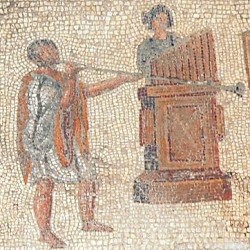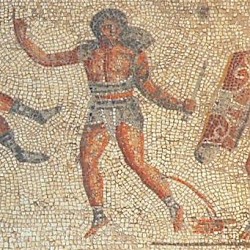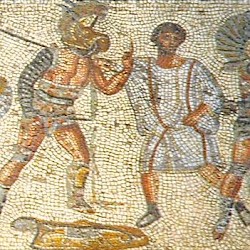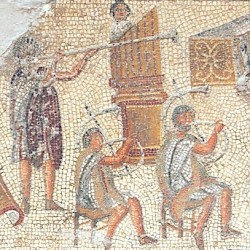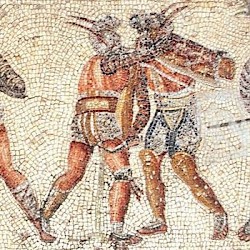Villa Dar Buc Ammera
Q8073057Villa Dar Buc Ammera: Roman villa near Lepcis Magna, famous for its mosaics, which are in the Archaeological Museum of Tripoli. This villa is also known as Villa Zliten, after the town three kilometers east of it.
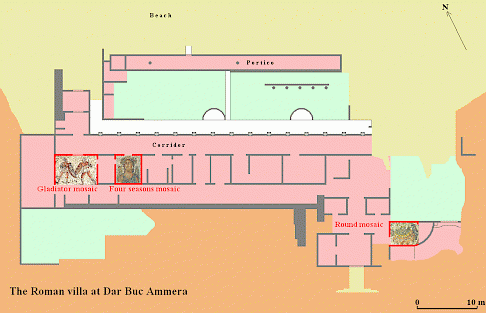
There were many Roman villas along the Libyan shore. The villa of Dar Buc Ammera, not far from Lepcis Magna, is one of them. It is famous for its mosaics, which are to be seen in the Archaeological Museum of Tripoli. This villa is also known as Villa Zliten, after the town three kilometers east of it.
Gladiator Mosaic
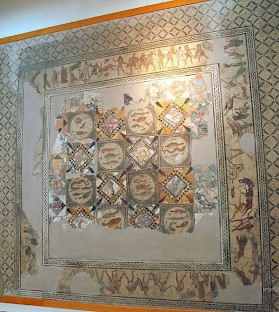
The most famous of the mosaics of the Villa Buc Ammera is the Mosaic of the Gladiators, which consists essentially of a set of sixteen square fields decorated with geometric designs or representations of several kinds of fish, with an edge that is decorated with pictures of gladiatorial contests. It was the floor of a dinner room (triclinium) and offers important visual evidence for the way the ancient Romans organized contests in the circus.
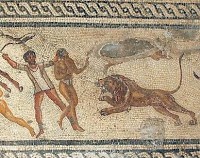
The right-hand side shows fights between wild animals, which one could see in the circus before the afternoon. You can also see the execution of criminals thrown ad bestias, the usual item at noon.
Pictures of the execution of criminals by animals were a common theme in ancient art, which is also shown on the fresco's from Mérida. In fact, we see how the government takes care of justice. The man who is killed on the scene shown to the right has a dark skin and may be one of the native Garamantes, and it has been argued that he is one of the people taken prisoner by general Valerius Festus in 70 CE, at the beginning of the reign of Vespasian, and executed in Lepcis Magna's Amphitheater (more...). These Garamantes had sided with the inhabitants of Oea, who had seized the opportunity offered by the civil war of 69 CE to settle some scores with the people of Lepcis Magna.

A comparable scene can be seen on the photo to the right: the execution of another criminal, who has been tied to a pole and is brought into the arena on a small chariot, where a hungry panther is about to take care of him. This man - again with a dark skin - may also have been one of the Garamantes who were defeated in 70.

The left hand side shows a fight against ostriches. The animals that were killed in the morning were preferably exotic ones, and it is known that in the 70s of the first century, a man from Lepcis traveled all the way across the Sahara to look for unusual African animals that might be killed in the arena (more...). Perhaps they met their end in the amphitheater of Lepcis, but they may also have played a role during the first shows in Rome's Colosseum.

The gladiators, who performed in the afternoon, are shown on two lines of pictures at the top and bottom. The combatants can be identified as a/o a murmillo and a thraex. Musicians are also shown.
As indicated above, the center of the mosaic consists of sixteen fields, decorated with plates of marble arranged in geometric designs (opus sectile), or decorated with pictures of aquatic animals. They are very detailed and every single fish can be identified with one of the products for sale on the market in a modern market in Libya.
